Cloning Cannabis With Aloe – Why It Works And How To Do It
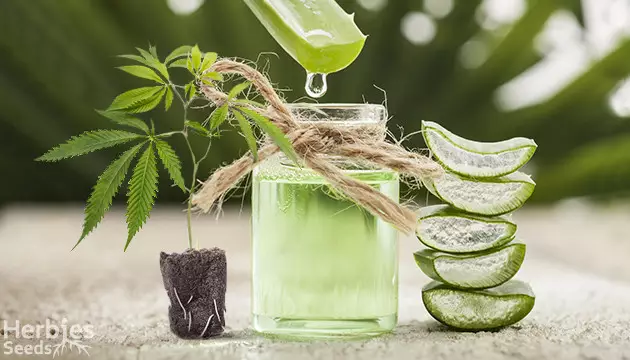
Looking for a way to clone organically? Look no further – cloning with aloe vera may be the solution you’re seeking. Aloe vera gel, a clear jelly-like substance that develops inside the branches of aloe plants, has several different applications in food and medicine. However, there’s also one fairly unknown use for aloe: cloning cannabis. Below, we’ll take a deep dive into how to use aloe vera for cloning and explain why you should try it in your garden.
Disclaimer: This method is based on anecdotal evidence and traditional practices rather than verified scientific findings.
Benefits Of Cloning Your Plants With Aloe
Aloe vera is a powerful, organic alternative to synthetic cloning solutions. The chemical makeup of aloe vera gel includes saponin, a natural wetting agent, and it’s also packed with enzymes and amino acids that help plants root more successfully. Besides that, aloe is known to contain salicylic acid, a molecule believed to potentially protect plants against dangerous pathogens during one of the most vulnerable points in their lifecycle.
Using aloe vera for cloning is also a great choice for cost-conscious growers, since it’s much cheaper than traditional cloning gel. Just remember that you need actual aloe from an aloe plant – store-bought aloe contains additives like alcohol that can kill your clones.
Disclaimer: This content is intended for use in regions where cannabis cultivation is legal. Please ensure compliance with your local laws and regulations before growing and cloning cannabis. Cannabis should only be cultivated by individuals of legal age.
General Process Behind Cloning Weed
Before you learn how to use aloe vera for cloning, you need to understand how cloning itself works. Cloning involves removing part of a vegging cannabis plant and nurturing it to make an exact replica of itself.
When cloning, take a razor blade and make a clean cut at a 45-degree angle. Then, place your plant directly into some cloning gel before adding it to a cloning cube. Finally, place a dome on the cloning cube and leave your plant in the dome until roots sprout, watering as-needed. For a full rundown of the cloning process, check out our post on cloning cannabis.
How To Use Aloe Vera For Cloning
Once you understand the process, cloning with aloe vera becomes fairly easy. We’ve broken it down into a step-by-step guide, below.
Step 1
Find a fat aloe branch filled with gel. Remove the branch and empty the gel into a blender cup. Blend the gel with a cup of water, then mix it into 0.8 gallons (about 3 liters) more of warm water. Let the water and aloe mix sit for between 30 and 60 minutes. Congratulations – you now have aloe tea.
Step 2
Place your aloe tea in a container such as a plastic cup. Cut clones from your plants with new razors. After you cut your clones, place them immediately into the vessel of aloe tea. Let them soak in your homemade cloning solution for a full day (24 hours).
Step 3
After you wait for a full day, repeat step 1 to make more aloe vera tea. Add the tea to a large container such as a bucket, and soak your rooting cubes in the tea for about 30 minutes. Then, remove your rooting cubes and put them in a cloning tray. Use pruning shears or some other pointy object to expand the hole in the middle of your cube.
Step 4
Cut another branch off your aloe vera plant. Apply some gel directly to the hole in your rooting cubes. Then, take the clones that you’ve been soaking in your homemade rooting gel overnight. Insert them directly into the aloe gel emerging from the aloe branch – twist lightly so you’re sure all of the bottom of the branch is covered with gel.
Step 5
Put the stem of your clone into the hole in your cloning cube. Don’t apply too much pressure when you do this, as you could damage the base of your plant. You also don’t want the end of your clone to push all the way through your cube and emerge out the bottom.
Step 6
Add some water into the base of your cloning tray to keep your plants moist. Don’t add too much – that can promote fungal growth. Instead, make sure it just reaches the bottom of the cloning cubes. You’re almost done cloning with aloe – only one step left!
Step 7
Finally, place a dome over your cloning tray to trap moisture. Water your clones as needed – it should take between 3 and 5 days for your plants to dry out. You should notice roots starting to develop in 2 weeks. Once you see white, healthy roots popping out of the bottom of your plants, you’re ready to transplant them into a larger container.
Aloe is Awesome
Aloe vera rooting hormone is a completely natural and organic way to clone your cannabis plants with a high success rate. Using this technique with healthy clones, it’s possible to maintain a 100% success rate with the clones you cut. The combination of high success rate, low cost, and organic growing technique makes aloe vera a highly attractive way for growers everywhere to pop their clones.
Herbies Head Shop expressly refuses to support the use, production, or supply of illegal substances. For more details read our Legal Disclaimer.

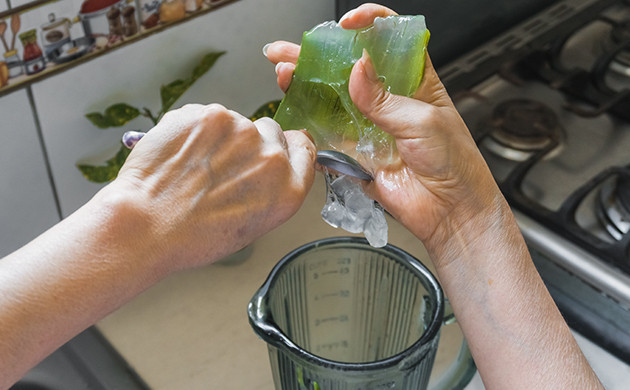


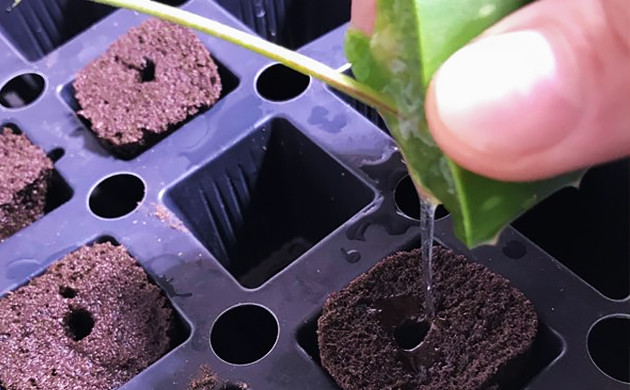
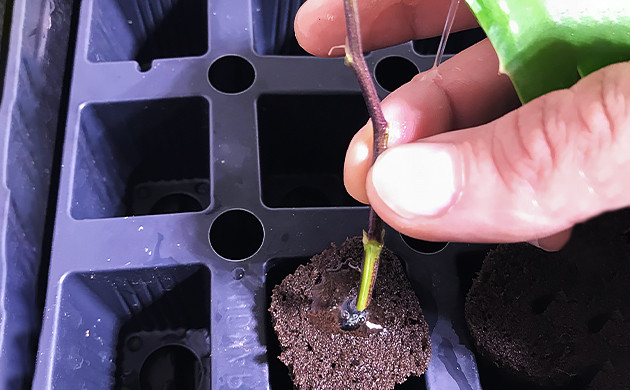





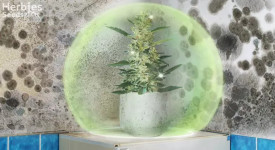





Thank you for leaving a comment for us!
Your feedback will be posted shortly after our moderator checks it.
Please note that we don’t publish reviews that: